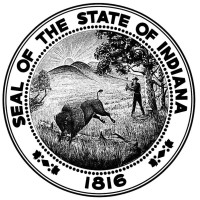
Commission on Elections - Philippines Company Cyber Security Posture
comelec.gov.phThe Commission on Elections (COMELEC) is the principal government agency tasked by the Constitution to enforce and administer all laws and regulations concerning the conduct of regular and special elections. The COMELEC was created by a 1940 amendment to the 1935 Constitution. Its membership was enlarged and its powers expanded by the 1973 and 1987 Constitutions. The Commission exercises not only administrative, but judicial and quasi-judicial powers. It is a body that is designed to be constitutionally independent from the executive, legislative and judicial branches of government to ensure the conduct of free, fair and honest elections. As an added measure, the constitution also grants fiscal autonomy to enable the COMELEC to operate effectively, efficiently and free from political interference. The constitution mandates that "funds certified by the Commission as necessary to defray the expenses for holding regular and special elections, plebiscites, initiatives, referenda, and recalls, will be provided in the regular or special appropriations and, once approved, will be released automatically upon certification by the Chairman of the Commission."
CE-P Company Details
comelecph
546 employees
365
922
Government Administration
comelec.gov.ph
Scan still pending
COM_3621881
In-progress
Between 900 and 1000
This score is AI-generated and less favored by cyber insurers, who prefer the TPRM score.
 CE-P Global Score
CE-P Global Score.png)

Commission on Elections - Philippines Company Scoring based on AI Models
| Model Name | Date | Description | Current Score Difference | Score |
|---|---|---|---|---|
| AVERAGE-Industry | 03-12-2025 | This score represents the average cybersecurity rating of companies already scanned within the same industry. It provides a benchmark to compare an individual company's security posture against its industry peers. | N/A | Between 900 and 1000 |
Commission on Elections - Philippines Company Cyber Security News & History
| Entity | Type | Severity | Impact | Seen | Url ID | Details | View |
|---|---|---|---|---|---|---|---|
| Commission on Elections - Philippines | Breach | 100 | 5 | 04/2016 | COM2141271023 | Link | |
Rankiteo Explanation : Attack threatening the organization’s existenceDescription: The COMELEC database was breached by Anonymous Philippines, revealing the voter records of over 55 million people. COMELEC representatives played down the data breach, saying that no private data was accessed. The research revealed that 1.3 million records of Filipino voters living abroad, complete with passport numbers and expiration dates, were included in the data dumps. The complete database of the Philippine Commission on Elections (COMELEC) was compromised by a huge data breach, making all registered voters in the country vulnerable to fraud and other threats. | |||||||
Commission on Elections - Philippines Company Subsidiaries

The Commission on Elections (COMELEC) is the principal government agency tasked by the Constitution to enforce and administer all laws and regulations concerning the conduct of regular and special elections. The COMELEC was created by a 1940 amendment to the 1935 Constitution. Its membership was enlarged and its powers expanded by the 1973 and 1987 Constitutions. The Commission exercises not only administrative, but judicial and quasi-judicial powers. It is a body that is designed to be constitutionally independent from the executive, legislative and judicial branches of government to ensure the conduct of free, fair and honest elections. As an added measure, the constitution also grants fiscal autonomy to enable the COMELEC to operate effectively, efficiently and free from political interference. The constitution mandates that "funds certified by the Commission as necessary to defray the expenses for holding regular and special elections, plebiscites, initiatives, referenda, and recalls, will be provided in the regular or special appropriations and, once approved, will be released automatically upon certification by the Chairman of the Commission."
Access Data Using Our API

Get company history
.png)
CE-P Cyber Security News
Safeguarding the Philippine Elections with AI and Cybersecurity
Over the course of the last 18 months, more than two billion people around the world have had the opportunity to vote in national elections.
NAMFREL responds to claims of vice mayoral candidate on alleged cybersecurity issues with ACMs
to transmit the election results. NAMFREL OBSERVATIONS: On Issue No 1: It is true that any system or device connected to the internet is exposed ...
Philippines poll body records over 3M cyberattacks during mid-term elections
Millions of people voted this week to elect more than 18000 officials - Anadolu Ajansı.
Microsoft And COMELEC Secure 2025 Philippine Elections
The Commission on Elections (COMELEC) has teamed up with leading technology firms, including Microsoft, to ensure that the upcoming Philippine elections are ...
Hacking attempts on Comelec website, overseas voting system unsuccessful
There have been unsuccessful cyber attacks on the Commission on Election's website and 60000 failed attempts to hack its internet voting ...
The Philippines: Strengthening Digital Security for Elections
The move has been hailed as a significant step in combating digital interference and protecting the integrity of the election process from ...
Shielding elections from cyberattacks
Protecting elections goes beyond technology; it also requires education and awareness. Election officials and campaign staff must be trained to ...
High-Tech Espionage Threatens Philippine National Security: Suspected Chinese Spy Busted Near Comelec HQ
High-Tech Espionage Threatens Philippine National Security: Suspected Chinese Spy Busted Near Comelec HQ · Keyboard Becomes a Weapon: UK's ...
COMELEC: No cybersecurity breach of election data
“This imputation of an alleged 'data breach/leak' is clearly done with malice and ill intent,” said Comelec Spokesperson John Rex Laudiangco.

CE-P Similar Companies

Helsingin kaupunki – Helsingfors stad – City of Helsinki
Helsingin kaupunki on Suomen suurin työnantaja, jonka palveluksessa on lähes 38 000 ammattilaista ja asiantuntijaa. Helsingin kaupunki tarjoaa henkilöstölle monipuolisia, mielenkiintoisia ja yhteiskunnallisesti merkittäviä työtehtäviä, hyvät mahdollisuudet kehittymiseen, ammattitaitoiset työkaveri

Ministero dell'Agricoltura, della Sovranità alimentare e delle Foreste
Il Ministero dell'Agricoltura, della Sovranità alimentare e delle Foreste (Masaf) si occupa dell'elaborazione e del coordinamento delle linee politiche agricole, agroalimentari, forestali, della pesca e dell’ippica a livello nazionale e internazionale. Rappresenta l'Italia in sede europea nelle cont

City of Amsterdam
Working for Amsterdam means working for the most beautiful city in the world. Think of its rich history, the role Amsterdam plays internationally, and events such as Sail, Gay Pride and King’s Day. Of course everybody wants to visit Amsterdam, or work or live here. As you can probably imagine, wo

General Directorate of Forestry
GENERAL DIRECTORATE of FORESTRY (GDF) ORMAN GENEL MÜDÜRLÜĞÜ (OGM) The first organization of forestry extends back to 1839, during rule of Ottoman Empire. The establishment of the first management planning team in 1916 and the preparation of the first management plan 1917 fall in this period. The

Comunidad de Madrid
Si necesitas información general y especializada sobre los servicios públicos madrileños puedes llamar al teléfono de Atención al Ciudadano 012. En la Comunidad de Madrid estamos encantados de recibir comentarios y favorecer el diálogo, por eso te proponemos unas normas básicas de participación:

State of Indiana
State government is more than senators, representatives, and elected officials. We build highways, provide drivers licenses, protect our children and vulnerable populations, create jobs, connect Hoosiers to job opportunities, maintain state parks, train law enforcement officers, and we run museums

Frequently Asked Questions (FAQ) on Cybersecurity Incidents
CE-P CyberSecurity History Information
Total Incidents: According to Rankiteo, CE-P has faced 1 incidents in the past.
Incident Types: The types of cybersecurity incidents that have occurred include ['Breach'].
Total Financial Loss: The total financial loss from these incidents is estimated to be {total_financial_loss}.
Cybersecurity Posture: The company's overall cybersecurity posture is described as The Commission on Elections (COMELEC) is the principal government agency tasked by the Constitution to enforce and administer all laws and regulations concerning the conduct of regular and special elections. The COMELEC was created by a 1940 amendment to the 1935 Constitution. Its membership was enlarged and its powers expanded by the 1973 and 1987 Constitutions. The Commission exercises not only administrative, but judicial and quasi-judicial powers. It is a body that is designed to be constitutionally independent from the executive, legislative and judicial branches of government to ensure the conduct of free, fair and honest elections. As an added measure, the constitution also grants fiscal autonomy to enable the COMELEC to operate effectively, efficiently and free from political interference. The constitution mandates that "funds certified by the Commission as necessary to defray the expenses for holding regular and special elections, plebiscites, initiatives, referenda, and recalls, will be provided in the regular or special appropriations and, once approved, will be released automatically upon certification by the Chairman of the Commission.".
Detection and Response: The company detects and responds to cybersecurity incidents through {description_of_detection_and_response_process}.
Incident Details
Incident 1: Ransomware Attack
Title: {Incident_Title}
Description: {Brief_description_of_the_incident}
Date Detected: {Detection_Date}
Date Publicly Disclosed: {Disclosure_Date}
Date Resolved: {Resolution_Date}
Type: {Type_of_Attack}
Attack Vector: {Attack_Vector}
Vulnerability Exploited: {Vulnerability}
Threat Actor: {Threat_Actor}
Motivation: {Motivation}
Incident 2: Data Breach
Title: {Incident_Title}
Description: {Brief_description_of_the_incident}
Date Detected: {Detection_Date}
Date Publicly Disclosed: {Disclosure_Date}
Date Resolved: {Resolution_Date}
Type: {Type_of_Attack}
Attack Vector: {Attack_Vector}
Vulnerability Exploited: {Vulnerability}
Threat Actor: {Threat_Actor}
Motivation: {Motivation}
Common Attack Types: As of now, the company has not encountered any reported incidents involving common cyberattacks.
Identification of Attack Vectors: The company identifies the attack vectors used in incidents through {description_of_identification_process}.
Impact of the Incidents
Incident 1: Ransomware Attack
Financial Loss: {Financial_Loss}
Data Compromised: {Data_Compromised}
Systems Affected: {Systems_Affected}
Downtime: {Downtime}
Operational Impact: {Operational_Impact}
Conversion Rate Impact: {Conversion_Rate_Impact}
Revenue Loss: {Revenue_Loss}
Customer Complaints: {Customer_Complaints}
Brand Reputation Impact: {Brand_Reputation_Impact}
Legal Liabilities: {Legal_Liabilities}
Identity Theft Risk: {Identity_Theft_Risk}
Payment Information Risk: {Payment_Information_Risk}
Incident 2: Data Breach
Financial Loss: {Financial_Loss}
Data Compromised: {Data_Compromised}
Systems Affected: {Systems_Affected}
Downtime: {Downtime}
Operational Impact: {Operational_Impact}
Conversion Rate Impact: {Conversion_Rate_Impact}
Revenue Loss: {Revenue_Loss}
Customer Complaints: {Customer_Complaints}
Brand Reputation Impact: {Brand_Reputation_Impact}
Legal Liabilities: {Legal_Liabilities}
Identity Theft Risk: {Identity_Theft_Risk}
Payment Information Risk: {Payment_Information_Risk}
Average Financial Loss: The average financial loss per incident is {average_financial_loss}.
Commonly Compromised Data Types: The types of data most commonly compromised in incidents are {list_of_commonly_compromised_data_types}.
Incident 1: Ransomware Attack
Entity Name: {Entity_Name}
Entity Type: {Entity_Type}
Industry: {Industry}
Location: {Location}
Size: {Size}
Customers Affected: {Customers_Affected}
Incident 2: Data Breach
Entity Name: {Entity_Name}
Entity Type: {Entity_Type}
Industry: {Industry}
Location: {Location}
Size: {Size}
Customers Affected: {Customers_Affected}
Response to the Incidents
Incident 1: Ransomware Attack
Incident Response Plan Activated: {Yes/No}
Third Party Assistance: {Yes/No}
Law Enforcement Notified: {Yes/No}
Containment Measures: {Containment_Measures}
Remediation Measures: {Remediation_Measures}
Recovery Measures: {Recovery_Measures}
Communication Strategy: {Communication_Strategy}
Adaptive Behavioral WAF: {Adaptive_Behavioral_WAF}
On-Demand Scrubbing Services: {On_Demand_Scrubbing_Services}
Network Segmentation: {Network_Segmentation}
Enhanced Monitoring: {Enhanced_Monitoring}
Incident 2: Data Breach
Incident Response Plan Activated: {Yes/No}
Third Party Assistance: {Yes/No}
Law Enforcement Notified: {Yes/No}
Containment Measures: {Containment_Measures}
Remediation Measures: {Remediation_Measures}
Recovery Measures: {Recovery_Measures}
Communication Strategy: {Communication_Strategy}
Adaptive Behavioral WAF: {Adaptive_Behavioral_WAF}
On-Demand Scrubbing Services: {On_Demand_Scrubbing_Services}
Network Segmentation: {Network_Segmentation}
Enhanced Monitoring: {Enhanced_Monitoring}
Incident Response Plan: The company's incident response plan is described as {description_of_incident_response_plan}.
Third-Party Assistance: The company involves third-party assistance in incident response through {description_of_third_party_involvement}.
Data Breach Information
Incident 2: Data Breach
Type of Data Compromised: {Type_of_Data}
Number of Records Exposed: {Number_of_Records}
Sensitivity of Data: {Sensitivity_of_Data}
Data Exfiltration: {Yes/No}
Data Encryption: {Yes/No}
File Types Exposed: {File_Types}
Personally Identifiable Information: {Yes/No}
Prevention of Data Exfiltration: The company takes the following measures to prevent data exfiltration: {description_of_prevention_measures}.
Handling of PII Incidents: The company handles incidents involving personally identifiable information (PII) through {description_of_handling_process}.
Ransomware Information
Incident 1: Ransomware Attack
Ransom Demanded: {Ransom_Amount}
Ransom Paid: {Ransom_Paid}
Ransomware Strain: {Ransomware_Strain}
Data Encryption: {Yes/No}
Data Exfiltration: {Yes/No}
Ransom Payment Policy: The company's policy on paying ransoms in ransomware incidents is described as {description_of_ransom_payment_policy}.
Data Recovery from Ransomware: The company recovers data encrypted by ransomware through {description_of_data_recovery_process}.
Regulatory Compliance
Incident 1: Ransomware Attack
Regulations Violated: {Regulations_Violated}
Fines Imposed: {Fines_Imposed}
Legal Actions: {Legal_Actions}
Regulatory Notifications: {Regulatory_Notifications}
Incident 2: Data Breach
Regulations Violated: {Regulations_Violated}
Fines Imposed: {Fines_Imposed}
Legal Actions: {Legal_Actions}
Regulatory Notifications: {Regulatory_Notifications}
Regulatory Frameworks: The company complies with the following regulatory frameworks regarding cybersecurity: {list_of_regulatory_frameworks}.
Ensuring Regulatory Compliance: The company ensures compliance with regulatory requirements through {description_of_compliance_measures}.
Lessons Learned and Recommendations
Incident 1: Ransomware Attack
Lessons Learned: {Lessons_Learned}
Incident 2: Data Breach
Lessons Learned: {Lessons_Learned}
Incident 1: Ransomware Attack
Recommendations: {Recommendations}
Incident 2: Data Breach
Recommendations: {Recommendations}
Key Lessons Learned: The key lessons learned from past incidents are {list_of_key_lessons_learned}.
Implemented Recommendations: The company has implemented the following recommendations to improve cybersecurity: {list_of_implemented_recommendations}.
References
Additional Resources: Stakeholders can find additional resources on cybersecurity best practices at {list_of_additional_resources}.
Investigation Status
Incident 1: Ransomware Attack
Investigation Status: {Investigation_Status}
Incident 2: Data Breach
Investigation Status: {Investigation_Status}
Communication of Investigation Status: The company communicates the status of incident investigations to stakeholders through {description_of_communication_process}.
Stakeholder and Customer Advisories
Incident 1: Ransomware Attack
Stakeholder Advisories: {Stakeholder_Advisories}
Customer Advisories: {Customer_Advisories}
Incident 2: Data Breach
Stakeholder Advisories: {Stakeholder_Advisories}
Customer Advisories: {Customer_Advisories}
Advisories Provided: The company provides the following advisories to stakeholders and customers following an incident: {description_of_advisories_provided}.
Initial Access Broker
Incident 1: Ransomware Attack
Entry Point: {Entry_Point}
Reconnaissance Period: {Reconnaissance_Period}
Backdoors Established: {Backdoors_Established}
High Value Targets: {High_Value_Targets}
Data Sold on Dark Web: {Yes/No}
Incident 2: Data Breach
Entry Point: {Entry_Point}
Reconnaissance Period: {Reconnaissance_Period}
Backdoors Established: {Backdoors_Established}
High Value Targets: {High_Value_Targets}
Data Sold on Dark Web: {Yes/No}
Monitoring and Mitigation of Initial Access Brokers: The company monitors and mitigates the activities of initial access brokers through {description_of_monitoring_and_mitigation_measures}.
Post-Incident Analysis
Incident 1: Ransomware Attack
Root Causes: {Root_Causes}
Corrective Actions: {Corrective_Actions}
Incident 2: Data Breach
Root Causes: {Root_Causes}
Corrective Actions: {Corrective_Actions}
Post-Incident Analysis Process: The company's process for conducting post-incident analysis is described as {description_of_post_incident_analysis_process}.
Corrective Actions Taken: The company has taken the following corrective actions based on post-incident analysis: {list_of_corrective_actions_taken}.
Additional Questions
General Information
Ransom Payment History: The company has {paid/not_paid} ransoms in the past.
Last Ransom Demanded: The amount of the last ransom demanded was {last_ransom_amount}.
Last Attacking Group: The attacking group in the last incident was {last_attacking_group}.
Incident Details
Most Recent Incident Detected: The most recent incident detected was on {most_recent_incident_detected_date}.
Most Recent Incident Publicly Disclosed: The most recent incident publicly disclosed was on {most_recent_incident_publicly_disclosed_date}.
Most Recent Incident Resolved: The most recent incident resolved was on {most_recent_incident_resolved_date}.
Impact of the Incidents
Highest Financial Loss: The highest financial loss from an incident was {highest_financial_loss}.
Most Significant Data Compromised: The most significant data compromised in an incident was {most_significant_data_compromised}.
Most Significant System Affected: The most significant system affected in an incident was {most_significant_system_affected}.
Response to the Incidents
Third-Party Assistance in Most Recent Incident: The third-party assistance involved in the most recent incident was {third_party_assistance_in_most_recent_incident}.
Containment Measures in Most Recent Incident: The containment measures taken in the most recent incident were {containment_measures_in_most_recent_incident}.
Data Breach Information
Most Sensitive Data Compromised: The most sensitive data compromised in a breach was {most_sensitive_data_compromised}.
Number of Records Exposed: The number of records exposed in the most significant breach was {number_of_records_exposed}.
Ransomware Information
Highest Ransom Demanded: The highest ransom demanded in a ransomware incident was {highest_ransom_demanded}.
Highest Ransom Paid: The highest ransom paid in a ransomware incident was {highest_ransom_paid}.
Regulatory Compliance
Highest Fine Imposed: The highest fine imposed for a regulatory violation was {highest_fine_imposed}.
Most Significant Legal Action: The most significant legal action taken for a regulatory violation was {most_significant_legal_action}.
Lessons Learned and Recommendations
Most Significant Lesson Learned: The most significant lesson learned from past incidents was {most_significant_lesson_learned}.
Most Significant Recommendation Implemented: The most significant recommendation implemented to improve cybersecurity was {most_significant_recommendation_implemented}.
References
Most Recent Source: The most recent source of information about an incident is {most_recent_source}.
Most Recent URL for Additional Resources: The most recent URL for additional resources on cybersecurity best practices is {most_recent_url}.
Investigation Status
Current Status of Most Recent Investigation: The current status of the most recent investigation is {current_status_of_most_recent_investigation}.
Stakeholder and Customer Advisories
Most Recent Stakeholder Advisory: The most recent stakeholder advisory issued was {most_recent_stakeholder_advisory}.
Most Recent Customer Advisory: The most recent customer advisory issued was {most_recent_customer_advisory}.
Initial Access Broker
Most Recent Entry Point: The most recent entry point used by an initial access broker was {most_recent_entry_point}.
Most Recent Reconnaissance Period: The most recent reconnaissance period for an incident was {most_recent_reconnaissance_period}.
Post-Incident Analysis
Most Significant Root Cause: The most significant root cause identified in post-incident analysis was {most_significant_root_cause}.
Most Significant Corrective Action: The most significant corrective action taken based on post-incident analysis was {most_significant_corrective_action}.
What Do We Measure?
















Every week, Rankiteo analyzes billions of signals to give organizations a sharper, faster view of emerging risks. With deeper, more actionable intelligence at their fingertips, security teams can outpace threat actors, respond instantly to Zero-Day attacks, and dramatically shrink their risk exposure window.
These are some of the factors we use to calculate the overall score:
Identify exposed access points, detect misconfigured SSL certificates, and uncover vulnerabilities across the network infrastructure.
Gain visibility into the software components used within an organization to detect vulnerabilities, manage risk, and ensure supply chain security.
Monitor and manage all IT assets and their configurations to ensure accurate, real-time visibility across the company's technology environment.
Leverage real-time insights on active threats, malware campaigns, and emerging vulnerabilities to proactively defend against evolving cyberattacks.




